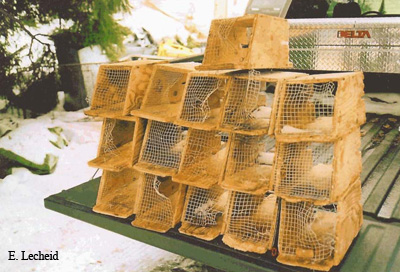Trapper Survey at the Southern Limit of Wolverine Distribution in Ontario
While public support for wolverine conservation is likely high among Ontarians, the direct costs of conserving these animals are borne by a small minority – the trapper community. In recent years, following the onset of the “zero quota” for wolverine off take by those individuals not protected by treaty rights in Ontario, the issues of trap line damage and incidental harvest have been subjects of significant controversy, with potential adverse impacts on provincial wolverine recovery efforts.

Results from preliminary research point out that human harvest is a relatively significant source of mortality for the Ontario wolverine population and may be contributing to limiting their recovery in managed forest areas at the southern edge of wolverine distribution. At the same time, perceived levels of trap line damage (e.g. destruction of equipment and trapped furbearers) by this animal with limited recourse to resolve this conflict is an ongoing concern of members of the trapper community and furbearer managers. As part of the effort to address this conflict and minimize incidental harvest on wolverine until recovery is achieved, the Ontario Wolverine Recovery Team has recognized the need for the collection of objective information on a number of associated issues directly from the affected trapper community.
We are using a survey to evaluate individual attitudes towards wolverines, incidental harvest circumstances and quantification of damage attributable to wolverines, suffered by individual trappers. We will also use this opportunity to gather information on the geography of wolverine occupancy at the southern limit of its distribution. In addition, a combination of personal and phone interviews, targeting selected trap lines in the Red Lake/Ear Falls, Sioux Lookout, and Dryden Districts will be implemented.